Without electricity, almost nothing can function in a modern motorhome. From the toilet flush to the LED lights and the heating, not much will work without electrical power.
Although gas hobs can be lit manually, gas heating systems won’t work without electricity to ignite the flame and power the blown-air fan.
Almost every appliance and anything with an electrical switch runs on 12V battery power in your motorhome. Older caravans sometimes used mains power going directly into the lighting system, but this hasn’t been the case for many years, for safety reasons.
When you plug into the electric hook-up on a campsite, the mains electricity triggers the motorhome’s built-in charging system, which then recharges the leisure battery and allows it to power all the appliances in the ’van.
This is a better way of powering the vehicle, because it removes the issue of voltage spikes from the mains supply, which is increasingly a problem thanks to the use of renewable energy sources (the sun doesn’t always shine and the wind doesn’t always blow!). It also makes the whole vehicle safer because low-amperage 12V-powered items are never going to shock a human.
So everything is hunky dory when you’re on a hook-up and you don’t need anything other than the stock motorhome kit that comes with all ’vans – a leisure battery and a charger.
But there are limitations to this power – a typical 16A UK hook-up should provide around 230V, giving a maximum 3680W of power. In theory. In practice, the grid supply tolerance allows it to vary from 216V and 253V.
At 216V you only have 3356W. Throw in a few losses and inefficiencies in the system, or sharing power on a site, and it’s easy to exceed that with an air fryer and a fan heater run simultaneously. This can trip out the hook-up bollard.
But what if you don’t want to be limited by being tethered to a cable? After all, campervans do not need electric hook-up. What if you want the freedom of having unlimited battery and mains power, anywhere? Happily, there are lots of great products on the market to help you do just that. The first thing to establish is how much power you need.
Going off-grid
If you want to heat or air-condition your motorhome, or cook meals, using only the vehicle batteries, you’re going to need a lot of power. This is often going to involve increasing the size of your battery bank, or installing a more powerful charging system, an inverter and some solar panels. Or perhaps any combination of the above.
At the NEC leisure vehicle shows, the Practical Motorhome team often take part in the technical Q&A sessions, and the consensus is that running out of power is a problem for many motorhome owners. Nobody ever boasts about having an excess of power! So how do you go about extending your capability away from hook-ups, to ensure you never run out of those crucial volts?
There are various online calculators that allow you to work out how long your battery bank will last with your usage. Although that usage can vary, generally speaking, anything in your ’van that heats, cools or has a motor will be a heavy consumer of power.
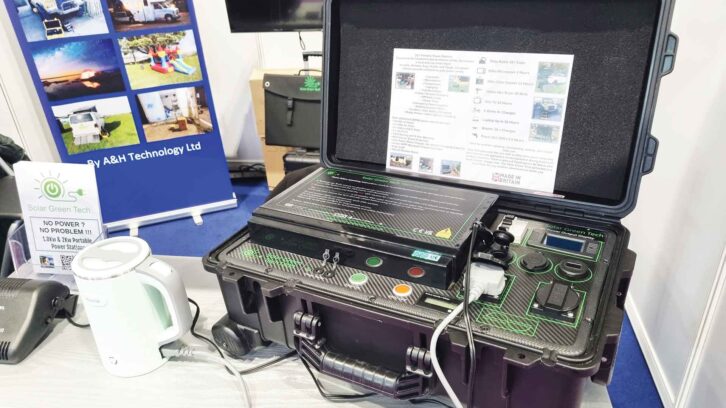
Microwaves, for example, can be particularly troublesome, because they demand high voltage, heat up and have a powered turntable.
A typical 800W microwave doesn’t consume 800W, either, because that number represents their output power. The input power consumption is typically double that. The best air fryer for a motorhome is a much better option, because it will generally have a less demanding load – and yes, if you were wondering, you can use an air fryer in a campervan too.
If there are just two of you in the vehicle and you have no heating demands (that is, no toaster, kettle, air fryer or hairdryer) and you don’t use air-conditioning off-grid, then you might be able to get away with a smaller battery bank; but even this will be depleted after a few days, so adding more power will extend your off-grid time and give you more flexibility.
Battery bank
This is the place to start. If you are still using the single battery supplied by the factory, you’ll be severely limited if you ever overnight without a mains hook-up. The easy way to add more power is simply to add an extra leisure battery (we recommend two identical ones in terms of brand, capacity, age and chemistry – don’t just bolt a new battery next to an old one).
Most leisure vehicles have provision to add a second battery and often even have the wiring already in place.
If there is no wiring there, you must make sure any additional batteries are fused close to the battery terminals. If you add any electrical item to a battery, it must be fused – without a fuse, your wiring loom acts as fuse and can ignite in the event of an electrical fault. Fuses are not optional.
The limitation to adding an extra leisure battery can often be payload and physical space in the battery box on some vehicles.
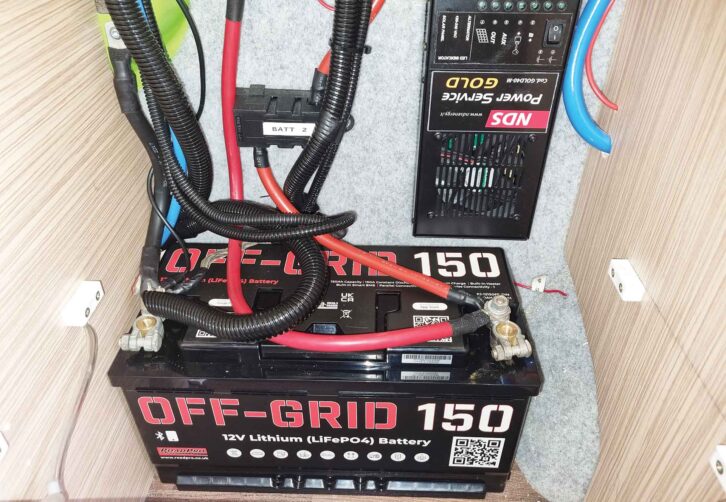
In this situation, it might be worth considering going for another type of battery chemistry. When you’re looking for the best campervan leisure battery, you will find the most common ones are lead acid, containing lead plates immersed in dilute sulphuric acid used as the electrolyte.
For safety, some manufacturers use gel batteries, where the electrolyte has been replaced with a gel and can’t spill out in the event of a crash.
AGM (absorbent glass mat) is another common non-spillable battery type, which has the electrolyte absorbed in sheets of fibres.
While all of these battery types work very well, their use of lead makes them heavy. For this reason, it’s well worth upgrading to modern lithium batteries (LiFePo4 lithium iron phosphate), which are lighter and more energy dense – one lithium battery can often have the same effective capacity as two lead acid units.
They are also said to offer a much greater depth of discharge, which allows them to be run very close to flat without damaging them.
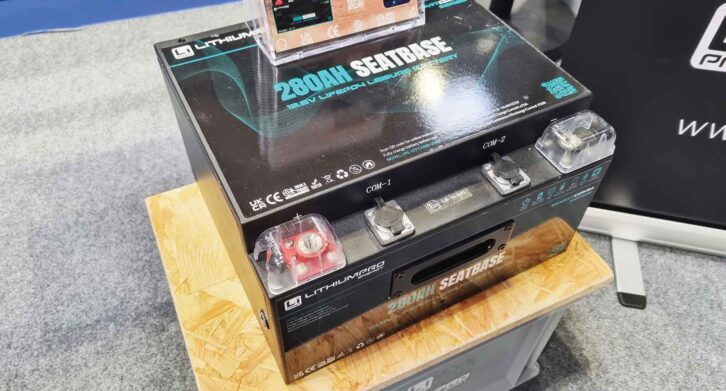
Flatten a lead acid battery to under 9V and it may never fully recover.
As lithium batteries are now starting to come down in price, they are well worth considering.
We wouldn’t recommend buying any batteries that ship direct from overseas online – these products can be a lucky dip. We’d suggest buying lithium battery from an advertiser in Practical Motorhome, a UK supplier or a UK show, to ensure you’re getting a quality unit that has a warranty and some comeback in the event of any problems.
As a minimum, we’d recommend a 150Ah lithium battery is a good starting point for anything from a campervan upwards. I recently upgraded my ’van from two 100Ah lead acid batteries to a single (much lighter) 150Ah lithium battery and it was a gamechanger in terms of extending the off-grid time.
For a family motorhome, adding a large lithium battery is an easy way to ensure you never run out of power.
You can get them in all sorts of sizes nowadays – at a recent show, they were selling 628Ah lithium batteries. For most average power consumers, that would allow you to camp off-grid for several weeks!
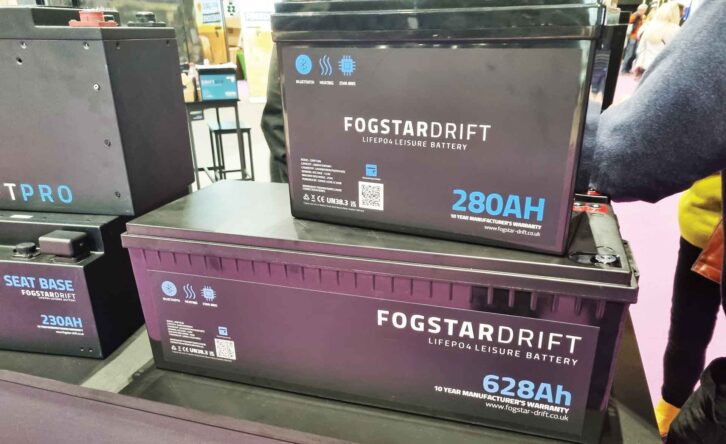
So step one in off-grid camping has to be to upgrade your battery bank. Do this before you buy anything else (for example, solar or uprated chargers).
The only caveat is to make sure your built-in charging system is compatible with the battery type you’re buying – not all chargers will recharge a lithium unit, so you might need to budget for a different charger in an older motorhome.
In addition, the larger the battery, the longer it will take to recharge from flat (that 628Ah battery needs to be mated to a monster charger – a regular motorhome 20A charger could take over 30 hours to refill it from flat!)
Battery-to-battery charger
After increasing your battery capacity, a battery-to-battery (B2B) charger, such as the EcoFlow Alternator Charger, should be the next most important item on your off-grid upgrade list.
I think that a B2B charger is more important than a solar panel, especially if you like to move around regularly and hop from location to location. This is what I love to do most – ambling from campsite to campsite across France and following the sunny weather.
They are rather poorly named items, because the term implies that they’re merely shuffling power around from one battery to another, but that’s not really what they do.
Probably the best way to describe these magical little power boxes is as a supercharger that is powered by your vehicle’s engine.
While your motorhome’s built-in battery charger typically recharges your leisure battery at a rate of 20A when your vehicle is plugged into the mains, a B2B charger can shove 40-80A into your leisure battery while you’re driving between campsites.
It uses the power of the vehicle’s alternator – which can be more than 200A units on modern motorhomes – and pushes a lot more current into the leisure battery.
In practice, this means that your leisure battery will be automatically recharged when you are driving between campsites. At 80A, they can recharge most leisure batteries in a couple of hours.
Many people find they can simply do away with paying for a hook-up once they fit a B2B charger, and they really are an essential item for any off-grid vehicle.
As motorhome upgrades go, they should be an option on every new ‘van’s price list, they are that useful. And in campervans that have limited space to house a massive battery bank, I think they’re essential.
Solar panels
It’s always worth adding a solar panel to a motorhome – but only after a B2B charger, which is a far more powerful recharging tool than any solar array.
With solar panels, it’s easy – just go for the largest capacity that you can physically fit on your roof (subject to payload – see our guide to motorhome weights for more on this) and wire it to the batteries with a suitable regulator and a fused supply. In summer, they can power various gadgets for ages and are a handy method for topping up your batteries. They work automatically and are very much a fit-and-forget item.
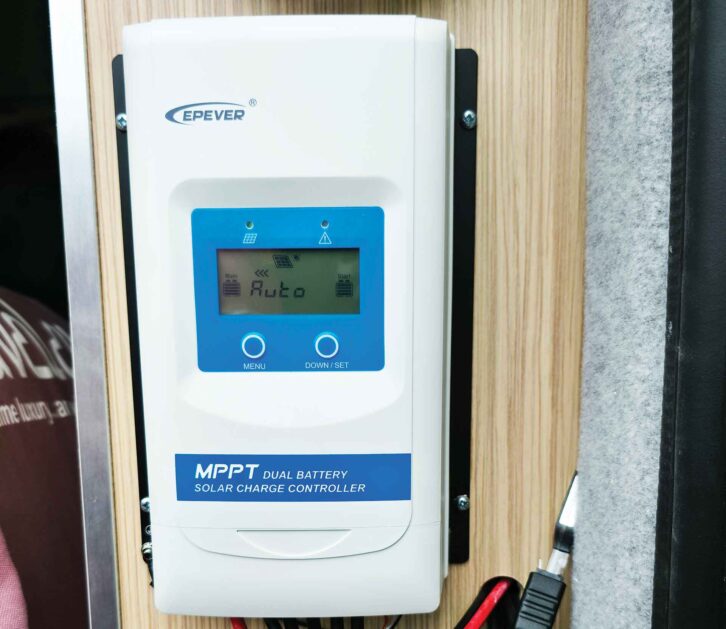
Just like the solar panels attached to the grid, leisure vehicle solar panels have limitations. They perform poorly in shade and if they’re not angled at the low sun in a British winter – and it is, of course, almost impossible to angle a motorhome roof to 45 degrees! – their output is vastly reduced.
A 150W solar panel that can produce 8A in summer might only muster 0.1A in winter. To help compensate for this – particularly if it is going to be used in the UK all year round – opt for the largest panel (or panels) that you can fit on your vehicle roof.
They work well in summer, though – I’ve seen the 400W panel on my ’van produce 24A in sunny conditions. This is extremely useful power and will considerably extend the off-grid time.
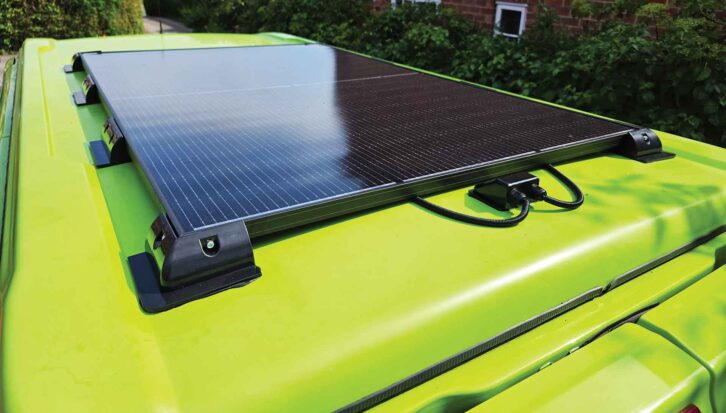
For a leisure vehicle these days, 150W should really be your starting point and you don’t have to have a roof-mounted unit – you can get fold-up panels and connect them to your leisure battery once you’re on a campsite (this has the benefit of being able to angle them towards the sunlight for maximum efficiency anywhere in the UK).
With any solar panel installation, check your ’van has sufficient payload for the extra weight of the unit.
Inverters and inverter chargers
If you want to use any mains-powered devices without being plugged into an electric hook-up, you will need an inverter. These electrical boxes convert the 12V DC battery power into 230V AC power. The point to be aware of is that some energy is lost in the conversion (typically 20%), and if you’re using them with high-power devices – that is, anything over 1000W – the current they can consume is enormous.
The 1500W inverter in my campervan hoovers up more than 100A while the Nespresso coffee machine is in use – and bear in mind, you can weld metal at that sort of output!
Fortunately, it’s only on for a couple of minutes at a time, so it doesn’t put too big a dent in the battery capacity.
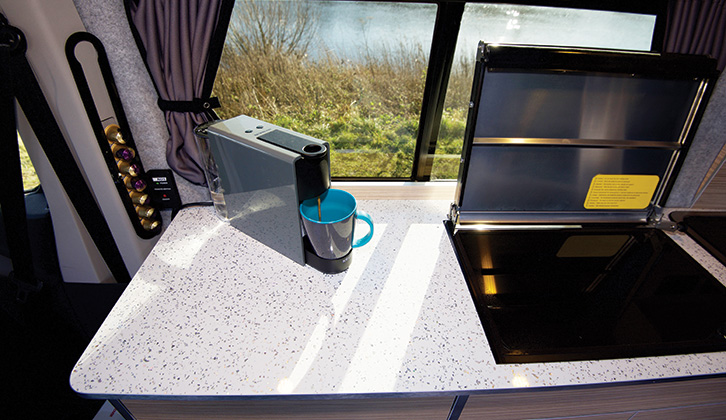
Microwaves and fan heaters are two of the heaviest loads you could run off an inverter. A 2500W fan heater will consume more than 200A from a battery – enough to flatten a 200Ah battery in under an hour. So use these items sparingly or not at all.
The lower the wattage of the 230V item, the longer you can run it off an inverter, so always buy items that are leisure vehicle-specific when kitting out your motorhome, such as the best motorhome kettle, and leave your domestic toaster and kettle at home.
A fairly recent innovation is to combine the motorhome mains charger and an inverter in one neat unit. This makes installation easier on new builds and is also useful when you’re upgrading to a larger battery bank. One major benefit they have is that should the mains power be interrupted, the unit will automatically switch to the inverter in just a few milliseconds, giving you uninterrupted power to electronic devices (so if you are working, your laptop won’t go off).
But if your existing motorhome charging system copes with a larger battery bank, it will be cheaper simply to add a separate inverter.
With inverters and inverter charger units, and any electrical motorhome item, we’d recommend only buying them from a UK supplier. Products that ship direct from abroad can be a lucky dip in terms of quality and meeting UK electrical standards.
Power stations and power banks
A newer trend – often promoted by YouTubers blogging next to waterfalls – is to opt for a power station unit. Various brands are available, such as Ecoflow, Anker, Sherpa and Jackery, but they are all fairly similar in terms of construction and performance, and consist of battery, charger, inverter and various mains and USB outlets.
Some can also be bought with neat solar panel packages, which can be a handy method of topping them up, and work really well in tents.
If you only ever use power inside the motorhome itself, you probably don’t need one – they’re in effect doubling up on the systems you already have.
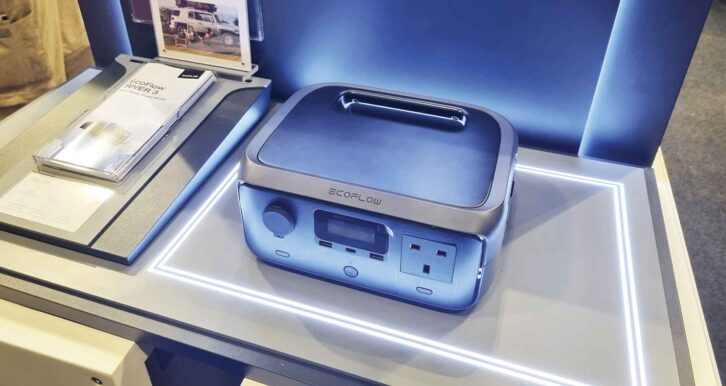
I personally confess to not being a huge fan of them – they’re pretty expensive for what they are – but there’s not getting away from the benefits of the best portable power station for van life. They provide a useful, safe way of adding a mains inverter without draining down your main battery bank.
There is no fitting cost or complex wiring involved, either, so if you don’t want to do any DIY, or pay £80 an hour in labour rates to have an inverter wired in, they’re a simple way to add off-grid mains power.
The fact that they’re portable makes them great for use in the best campervan awning or remote from the vehicle, too. Many people use them to run an air fryer and cook outside without risking flattening the main vehicle leisure battery.
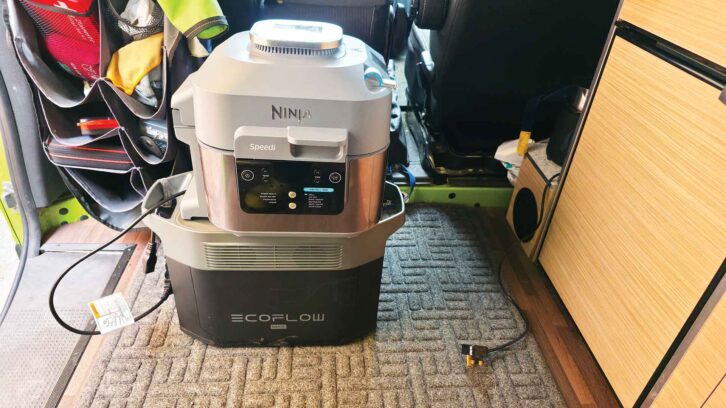
They’re also great for hobbies – I use mine to power a paddleboard inflator and to recharge my racecar when I’m at motorsport events (where hook-ups are limited and divvied out on a first come, first served basis).
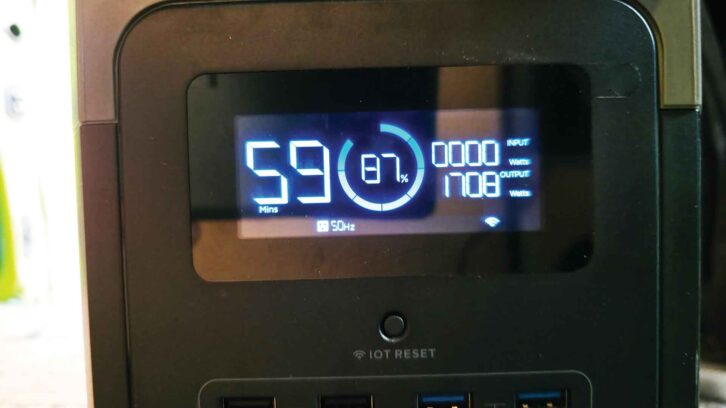
Pick a powerstation based on your usage, though – the larger the capacity, the heavier and bulkier they are to lug around. I run an Ecoflow Delta Max and you really wouldn’t want to move it very far, because it weighs 12kg! Then you get more compact options, such as the Bluetti EB3A, which only weighs 4.6kg, but has a smaller capacity.
For hiking or backpacking around a tourist attraction, it’s always worth packing a more compact powerbank, to ensure your mobile devices are kept charged up – they’re an essential item in the event of an emergency.
Consume less with new gadgets
Although the number of electrical gadgets in our vehicles and homes has increased, most modern devices are built with low energy use in mind and there are always new, more efficient appliances coming onto the market. The 100W light bulb that used to be in the centre of our lounge probably consumes more energy than an entire modern house with LED lights!
It really pays to shop around for energy-efficient gadgets and devices, as well as upgrading your battery and charging systems – look for low-energy kettles and toasters. Always check the information label on the base of the product to determine its input energy consumption – lower is better.
For motorhomes, plenty of clever energy-efficient devices are becoming available these days. One example of this is that a couple of UK engineers have founded a company, Portal Zero, that manufactures a new range of super-efficient flush induction hobs.

They’re currently developing one that works through the worktop and is not visible at all on the worktop! You can check out their induction hob range, including a new standalone 12V model, at portalzero.tech.
Another firm is producing a new type of super-efficient blown-air heater. I saw a demonstration of the 600W Ablemail AHC12 electric heater at the recent NEC motorhome show, and this unit runs directly off 12V (drawing up to 60A – considerably less than a fan heater running from an inverter), but offers a very rapid warm-up time.
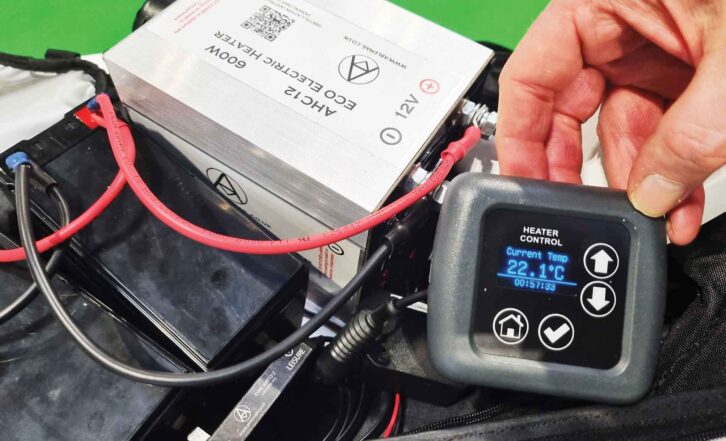
In just 57 seconds, it heated up an ambient air temperature probe to 22oC. Take a look at ablemail.co.uk, a fascinating website offering all kinds of clever battery-powered tech.
In general, it’s well worth checking which new products have come onto the market at leisure vehicle shows.
Verdict
This is one of those simple situations where bigger is almost always better. So go big on your battery bank, and go lithium if possible, pairing it up with a beefy B2B charger.
If funds are limited, those two items would be my suggested must-haves. Every campervan should have a B2B charger – it’s a real gamechanger.
Only after fitting these two options would I then fit solar.
If you already have a professionally built motorhome, adding an inverter is a useful way of gaining mains power, while if you want mains power that you can move between vehicles or use outside, a power station can be a good addition to your touring kit.
When you’re setting off on tour, one thing you’re going to want to ensure is that you avoid as many common touring errors as possible – don’t miss our guide to the 33 motorhome mistakes you’ll want to avoid to ensure you avoid the errors that could otherwise spoil your fun.
Lead image: Getty Images
If you’ve enjoyed reading this article, why not get the latest news, reviews and features delivered direct to your door or inbox every month. Take advantage of our brilliant Practical Motorhome magazine SUBSCRIBERS’ OFFER and SIGN UP TO OUR NEWSLETTER for regular weekly updates on all things motorhome related.
Leave a Reply